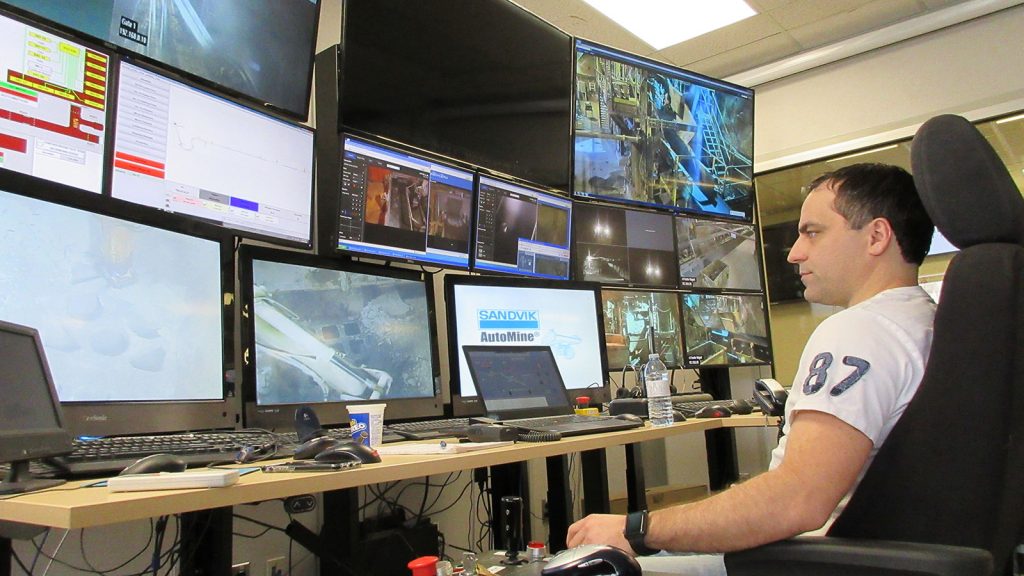As Barrick’s digital transformation progresses, the company is beginning to introduce autonomous trucks at its operations. A pilot project for these vehicles, which are controlled by an operator from a remote location, is underway at the company’s Cortez underground operation in Nevada.
But while teleoperated mining equipment is a new thing for most of Barrick, one mine has been using it for more than a decade. The Hemlo mine in northern Ontario began using the technology in April 2007. When the new system was introduced, workers were concerned for their jobs.
Jon Laird, Mine Operations Superintendent at Hemlo, understands the wariness. But a decade later, the technology has expanded and fears of job losses have subsided. “Even I had to be able to digest it before I could see the benefits,” Laird says. “Once I did, there was no question in my mind that it was the right thing to do. Once people have the opportunity to see how it works, most are right on board with it.”
He adds, “As we bring more automation into the mine, we’re trying to help people understand the real change autonomous technology brings. It’s not the number of jobs, but the nature of work.”
In 2007, the underground mine operations at Hemlo had two autonomous trucks, one chute, (an inclined passage for transporting ore), and one rock breaker. All were operated from surface thousands of feet above from a single tele-remote chair. Today, the system has three trucks, a scoop loader, three chutes, two rock breakers, and underground conveyor belts that can be operated from surface.
The benefits of the system are clear. With tele-remote, an operator safely controls the work from a chair on the surface. Autonomous vehicles at Hemlo are isolated from vehicles operated by people and the vehicles are programmed to avoid other autonomous trucks. In 10 years, there have been no incidents or injuries at Hemlo related to the autonomous fleet.
“First and foremost, these machines allow us to be much safer at what we do,” says Sean McCarthy, Engineering Superintendent at Hemlo. McCarthy also points to reliability and efficiency as benefits. “The mechanical maintenance on the autonomous trucks is much lower than on manually operated trucks,” he says. “We also don’t have to wait to clear the mine of blast smoke before excavating, or wait for people to come up from underground at crew change-out.”
As Hemlo goes through regular end-of-life equipment replacement over the next five years, the plan is to add more automation-ready equipment. “Our strategy is to move more tons with the same number of people rather than moving the same number of tons with fewer people,” McCarthy says.
While the transition to automated equipment can be challenging for miners who’ve worked underground their whole careers, the experience at Hemlo shows that it can be done. “The biggest challenge is to get people to realize that technology is not the devil,” Laird says. “Once people see the benefit, they dive right in. Here at Hemlo, people don’t give the autonomous trucks a second look today.” Automation is a key element to staying competitive in the modern mining world.











